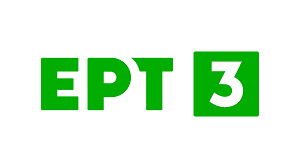Summary
In recent years, researchers in the field of Cultural Heritage (CH) have intensified their efforts to develop new ways to enhance the conservation, promotion and accessibility of cultural content in order to attract more and more audiences. Therefore, they now increasingly include new technologies and digital tools in their operation, since their application both with the general public and among the cultural organisations themselves, is considered particularly effective.
Digital twins are virtual representations of physical objects, systems, or environments that can be used for various purposes such as simulation, testing, and monitoring. In the context of cultural heritage, digital twins can be used to create virtual replicas of historical buildings, archaeological sites, or other cultural artefacts.
Digital twins in CH can provide a range of benefits, including:
•Preservation: Digital twins can be used to monitor the physical condition of historical buildings and settlements, and to develop strategies for their preservation and restoration.
•Accessibility: Digital twins can make CH sites more accessible to people who are unable to visit them in person, such as those with disabilities or those who live far away.
•Education: Digital twins can be used to create interactive educational resources that allow people to explore and learn about CH buildings and settlements.
•Research: Digital twins can be used to conduct research on CH buildings and settlements, such as studying their construction, materials, or historical context.
•Tourism: Digital twins can be used to enhance the tourist experience by providing virtual tours of CH sites or by allowing visitors to interact with virtual replicas of artefacts.
Overall, digital twins can help to preserve and promote CH for future generations while also making it more accessible and engaging for people today. In conclusion, digital twins have been increasingly used in the CH field, but there is a need for a comprehensive and systematic review of the literature on this topic. This study aims to address this gap by conducting a systematic literature review of digital twins in CH and more specifically in historical buildings and settlements.
Objectives
The objectives of a literature review on digital twins are:
•To gain an understanding of the concept of digital twins by identifying the origins of the concept, its definitions, and how it has evolved over time.
•To identify the different types of digital twins that have been used in the CH field.
•To explore the applications of digital twins and identify the potential benefits of using digital twins in the CH domain.
•Provide recommendations for future research on digital twins in the CH field.
Overall, the objectives of a literature review on digital twins are to gain an understanding of the concept, identify the different types and applications, identify the challenges, and identify research gaps and opportunities in the CH field.
Method
A systematic literature review will be conducted in this article. A systematic literature review is a comprehensive and structured approach that involves defining a research question, developing a search strategy, screening and selecting relevant studies, and analysing and synthesising the results. This method is useful for ensuring that all relevant literature is identified and for providing a rigorous and transparent process for reviewing the literature.
Conclusion
This article will provide a comprehensive and systematic review of the literature on digital twins in the CH field, and more specifically in historical buildings and settlements. The findings of this study will contribute to a better understanding of the effectiveness of digital twins in optimising performance, reducing costs, and improving safety in CH domain. The recommendations provided in this study will inform future research on digital twins in CH.
Back














